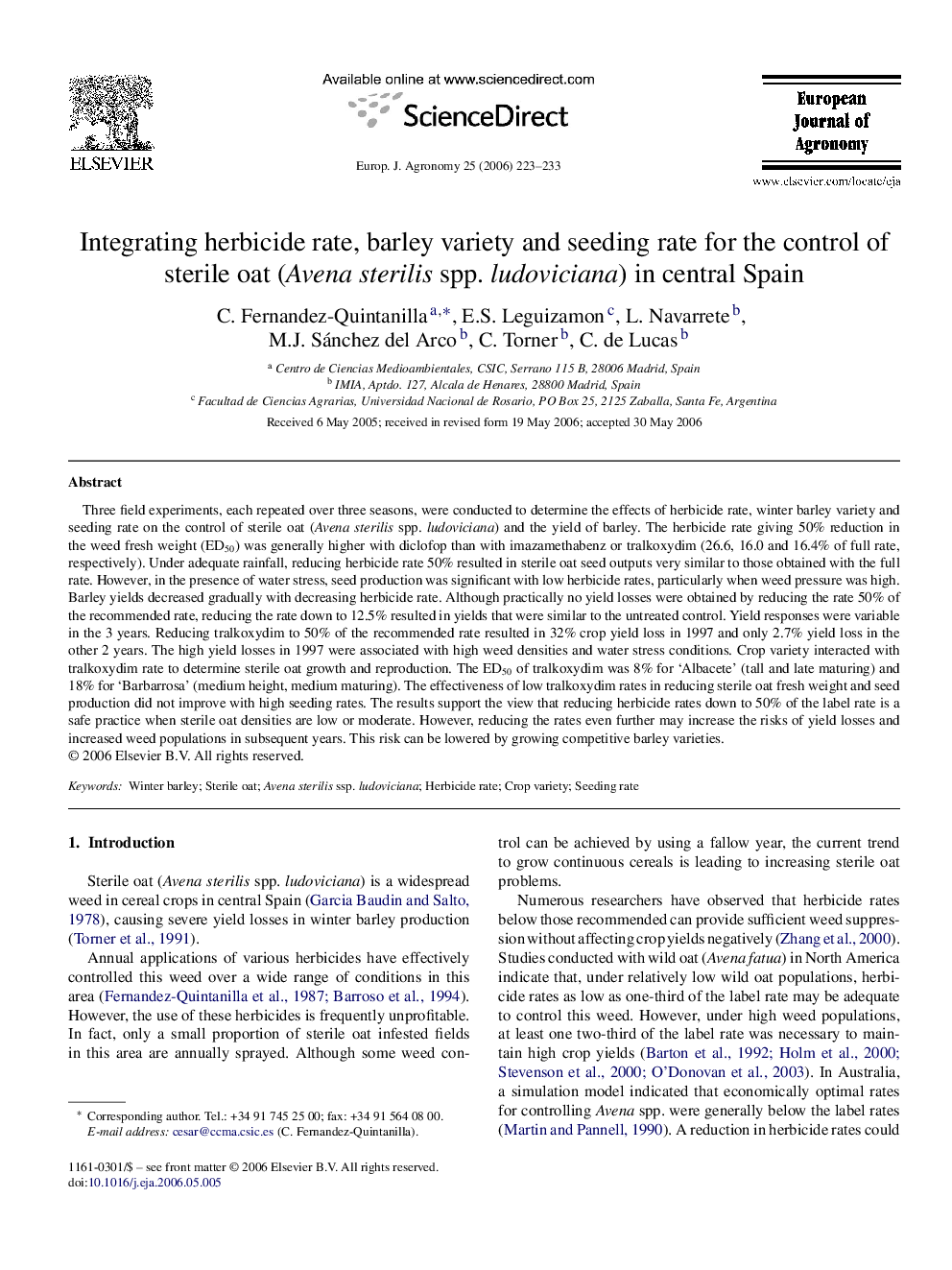| کد مقاله | کد نشریه | سال انتشار | مقاله انگلیسی | نسخه تمام متن |
|---|---|---|---|---|
| 4509741 | 1624529 | 2006 | 11 صفحه PDF | دانلود رایگان |

Three field experiments, each repeated over three seasons, were conducted to determine the effects of herbicide rate, winter barley variety and seeding rate on the control of sterile oat (Avena sterilis spp. ludoviciana) and the yield of barley. The herbicide rate giving 50% reduction in the weed fresh weight (ED50) was generally higher with diclofop than with imazamethabenz or tralkoxydim (26.6, 16.0 and 16.4% of full rate, respectively). Under adequate rainfall, reducing herbicide rate 50% resulted in sterile oat seed outputs very similar to those obtained with the full rate. However, in the presence of water stress, seed production was significant with low herbicide rates, particularly when weed pressure was high. Barley yields decreased gradually with decreasing herbicide rate. Although practically no yield losses were obtained by reducing the rate 50% of the recommended rate, reducing the rate down to 12.5% resulted in yields that were similar to the untreated control. Yield responses were variable in the 3 years. Reducing tralkoxydim to 50% of the recommended rate resulted in 32% crop yield loss in 1997 and only 2.7% yield loss in the other 2 years. The high yield losses in 1997 were associated with high weed densities and water stress conditions. Crop variety interacted with tralkoxydim rate to determine sterile oat growth and reproduction. The ED50 of tralkoxydim was 8% for ‘Albacete’ (tall and late maturing) and 18% for ‘Barbarrosa’ (medium height, medium maturing). The effectiveness of low tralkoxydim rates in reducing sterile oat fresh weight and seed production did not improve with high seeding rates. The results support the view that reducing herbicide rates down to 50% of the label rate is a safe practice when sterile oat densities are low or moderate. However, reducing the rates even further may increase the risks of yield losses and increased weed populations in subsequent years. This risk can be lowered by growing competitive barley varieties.
Journal: European Journal of Agronomy - Volume 25, Issue 3, October 2006, Pages 223–233